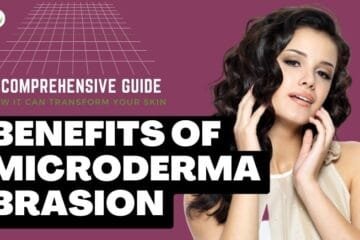Going to the beach is fun! But sun exposure can make your skin darker, especially on your arms, legs, face, and back. This is called a sun tan, and many people look for effective sun tan removal treatments to restore their natural skin tone. Don’t worry, you can get rid of it! There are things you can do at home, like using special creams, or you can see a doctor for help. This article will tell you all about sun tans, how to prevent them, and how to get rid of them.
What is Sun Tan?
A suntan occurs when the skin gets exposed to sunlight, causing it to darken. The sun emits ultraviolet (UV) radiation, which penetrates the skin and triggers the production of melanin, a pigment that gives the skin its color. Melanin acts as a natural defense mechanism, absorbing UV rays to protect the deeper layers of the skin from damage.
However, prolonged exposure to sunlight can lead to an overproduction of melanin, resulting in a sun tan. This excess melanin forms a protective layer over the skin cells to shield them from further UV damage. While a tan may seem like a healthy glow, it’s actually a sign of skin damage.
The sun’s rays come in two types: UVA and UVB. Both can reach the deeper layers of your skin and tell the melanocytes to make more melanin. The more sun you get, the more melanin is produced, making your tan darker.
But too much sun isn’t good. Just like a bodyguard getting overwhelmed, too much sun exposure can burn your skin (sunburn), damage its elasticity (stretchiness), and make you look older faster.
Causes of Sun Tan
When you spend time in the sun, your skin can get darker, which we call a tan. This happens because of something called UV rays from the sun. UV rays are like tiny beams of sunlight that can affect your skin.
- UVA Rays: Think of these as aging rays. UVA rays have longer wavelengths and can penetrate deep into the skin. They are mainly responsible for causing premature aging, like wrinkles and age spots. UVA rays are present all year round, even on cloudy days, and they can pass through glass.
- UVB Rays: These are the burning rays. UVB rays have shorter wavelengths and primarily affect the outer layer of the skin. They are the main cause of sunburns and can also contribute to skin cancer development. UVB rays are stronger during the summer months and are blocked by most window glass.
- UVC Rays: UVC rays have the shortest wavelength and are typically absorbed by the Earth’s ozone layer, so they don’t reach the surface in significant amounts. However, they are very powerful and can cause damage to genetic material (DNA), which is why artificial sources of UVC, like certain types of lamps used for sterilization, can be hazardous to human health.
In summary, UVA rays penetrate deep into the skin and cause aging and some types of skin cancer; UVB rays primarily affect the outer layer of the skin, causing sunburn and skin cancer; and UVC rays, although mostly absorbed by the ozone layer, can be harmful to DNA if exposure occurs.
Types of Sun Tan
- Immediate Tan: This type of tan appears right after sun exposure. It’s caused by the sun’s UV rays stimulating melanin production in the skin, resulting in a quick tan.
- Delayed Tan: Sometimes, tanning may not show up immediately but develops gradually over the next few hours or days after sun exposure. This delayed reaction is still due to melanin production but takes a bit longer to become noticeable.
- Uniform Tan: A uniform tan is when the skin tans evenly across all exposed areas. This happens when the sun’s rays hit the skin consistently, and melanin production occurs uniformly.
- Patchy Tan: In contrast to a uniform tan, a patchy tan results in uneven tanning across the skin. This could be due to factors like uneven application of sunscreen, clothing blocking some areas from sun exposure, or natural variations in skin pigmentation.
- Sunburn: Sunburn is technically not a tan but rather a burn caused by overexposure to the sun’s UV radiation. It’s characterized by redness, pain, and sometimes blistering of the skin. Sunburn indicates damage to the skin cells and should be avoided.
- Tanning Bed Tan: Tanning beds use artificial UV light to induce tanning. The tan achieved from tanning beds is similar to sun-induced tans but carries similar risks of skin damage and increased risk of skin cancer due to UV exposure.
- Tan Lines: Tan lines occur when certain areas of the skin are protected from the sun while others are exposed. This can create distinct lines or patterns of lighter and darker skin tone, often seen where clothing covers parts of the body.
Effects of Sun Tan

- Skin Cancers: Prolonged exposure to the sun’s UV radiation can damage the DNA in your skin cells, leading to mutations that increase the risk of skin cancers such as melanoma, basal cell carcinoma, and squamous cell carcinoma.
- Sunburns: Sunburn occurs when the skin is exposed to excessive UV radiation, leading to redness, pain, and, in severe cases, blistering. Sunburns not only increase the risk of skin cancer but also cause discomfort and peeling.
- Actinic Keratosis: This condition manifests as rough, scaly patches on the skin and is caused by prolonged sun exposure. While not always cancerous, actinic keratosis can progress to skin cancer if left untreated.
- Premature Aging: Exposure to UV radiation accelerates the aging process of the skin, leading to wrinkles, fine lines, sagging skin, and age spots. This premature aging is due to the breakdown of collagen and elastin fibers in the skin.
- Weak Immunity: UV radiation suppresses the immune system, making the skin more susceptible to infections and reducing its ability to repair damage caused by the sun. This weakened immunity can also exacerbate existing skin conditions.
- Eye Damage: Prolonged exposure to UV radiation can damage the eyes, leading to conditions such as cataracts, macular degeneration, and photokeratitis (sunburn of the cornea). Without proper protection, UV radiation can cause long-term damage to the eyes and vision.
In summary, while sunlight is essential for vitamin D synthesis and overall well-being, excessive exposure to UV radiation through sun tanning can have serious consequences for your skin, immunity, and eye health
Prevention of Sun Tan

- Use Sunscreen: Apply sunscreen with at least SPF 30 before going out in the sun. Make sure it offers broad-spectrum protection against both UVA and UVB rays.
- Cover Up: Wear protective clothing like long-sleeved shirts, wide-brimmed hats, and sunglasses to shield your skin and eyes from direct sunlight.
- Seek Shade: Limit your time in the sun, especially between 10 a.m. and 4 p.m. when the sun’s rays are strongest. Find shade under trees, umbrellas, or awnings.
- Stay Hydrated: Drink plenty of water to keep your skin hydrated from the inside out. Dehydrated skin is more prone to sun damage.
- Reapply Sunscreen: Reapply sunscreen every two hours, or more frequently if you’re sweating or swimming. Water-resistant sunscreen is ideal for outdoor activities.
- Avoid Tanning Beds: Steer clear of tanning beds and sunlamps, as they emit harmful UV radiation that can accelerate skin aging and increase your risk of skin cancer.
- Use Protective Lip Balm: Don’t forget to protect your lips with a lip balm that contains SPF. Lips can also get sunburned and damaged.
- Exfoliate Regularly: Regular exfoliation helps remove dead skin cells, making your skin less prone to tan. But avoid excessive exfoliation, which can irritate your skin.
- Moisturize: Use a moisturizer daily to keep your skin healthy and hydrated. Dry skin tends to tan more easily and can peel after sun exposure.
- Eat a Healthy Diet: Foods rich in antioxidants, like fruits and vegetables, can help protect your skin from sun damage.
By following these simple steps, you can enjoy time outdoors while minimizing the risk of getting a sun tan and keeping your skin healthy and protected.
Professional Sun Tan Removal Treatments

- Chemical Peels: This treatment involves applying a chemical solution to the skin, which exfoliates the outer layers. It helps to reduce the appearance of sun damage, including tans and sunspots. Popular options include glycolic acid peels and lactic acid peels.
- Microdermabrasion: In this procedure, tiny crystals are used to gently remove the outer layer of dead skin cells. It’s effective for treating sun tans and can also improve the overall texture and tone of the skin.
- Laser Therapy: Laser treatments target specific areas of sun damage, breaking up excess melanin and stimulating collagen production. This helps to fade tans and reduce the appearance of sun spots over time.
- Intense Pulsed Light (IPL) Therapy: Similar to laser therapy, IPL uses pulses of light to target sun-damaged areas of the skin. It’s particularly effective for reducing pigmentation caused by sun exposure, including tans and sun spots.
- Topical Treatments: There are various topical creams and serums available that can help to fade sun tans and reduce pigmentation. These often contain ingredients like hydroquinone, retinoids, or vitamin C, which work to lighten the skin and even out tone.
- Cryotherapy: Cryotherapy involves freezing the skin with liquid nitrogen to remove damaged cells and stimulate new cell growth. While it’s often used for more serious skin conditions, it can also help to improve the appearance of sun tans and sun spots.
Before opting for any of these treatments, it’s essential to consult with a dermatologist or skincare professional to determine the best option for your skin type and concerns. They can provide personalized recommendations and ensure that the treatment is safe and effective for you.
Natural Remedies for Sun Tan Removal
- Lemon Juice: Lemon juice acts as a natural bleach with vitamin C and citric acid to lighten dark spots. Apply fresh juice, leave for 10 minutes, then rinse. Avoid if you have sensitive skin, as it may cause irritation.
- Aloe Vera Gel: Aloe vera is a soothing superstar when it comes to sunburns and suntans. It’s got anti-inflammatory properties that can calm irritated skin and help fade tan lines. Apply pure aloe vera gel directly from the plant or opt for a store-bought version. Apply the gel liberally and allow it to begin its healing process.
- Cucumber: Cucumbers aren’t just for salads—they’re also great for cooling and rejuvenating the skin. Blend a cucumber into a paste and apply it to your sun-tanned skin. The natural enzymes in cucumbers can help lighten the tan and leave your skin feeling refreshed.
- Yogurt and Turmeric Mask: Yogurt is not only delicious but also a fantastic natural exfoliant. Mix some plain yogurt with a pinch of turmeric to form a paste. Turmeric has skin-brightening properties that can help fade tan lines. Apply the mixture to your skin and let it sit for 20 minutes before rinsing it off with water.
- Potato: Potatoes might seem like an unlikely hero, but they contain enzymes and vitamin C that can help lighten skin and reduce tan lines. Grate a potato and apply the pulp directly to your skin. Leave it on for about 15 minutes before rinsing off with water.
Consistency is key when using sun tan removal treatments. Results take time, but regular use helps fade a suntan. Always protect your skin by wearing sunscreen and seeking shade. Check out how to protect your skin from the sun’s harmful rays for better sun protection.
Skincare Products for Sun Tan Removal
- Tan Removal Creams: Look for creams enriched with ingredients like kojic acid, glycolic acid, or vitamin C. Brands like Olay Natural White Glowing Fairness Cream and Lakmé Absolute Perfect Radiance Skin Lightening Day Crème are popular choices.
- Tan Removal Products with Lightening Actives: Opt for serums or lotions containing potent lightening actives such as arbutin, licorice extract, or niacinamide. Products like The Ordinary Alpha Arbutin 2% + HA and Kiehl’s Clearly Corrective Dark Spot Solution can help fade tan lines effectively.
- De-tan Face Pack: Treat your skin to a pampering session with a de-tan face pack. Look for formulations with natural ingredients like turmeric, lemon, or papaya. Mamaearth Ubtan Face Mask and Plum Chamomile & White Tea Glow-Getter Face Mask are great options for gentle yet effective tan removal.
- Exfoliation Products: Buff away dead skin cells and reveal a brighter complexion with exfoliation products. Choose gentle scrubs or chemical exfoliants with ingredients like alpha hydroxy acids (AHAs) or beta hydroxy acids (BHAs). St. Ives Fresh Skin Apricot Scrub and Paula’s Choice Skin Perfecting 2% BHA Liquid Exfoliant can help in tan removal and reveal smoother skin.
Remember, consistency is key when it comes to tackling sun tan. Incorporate these products into your skincare routine regularly, and don’t forget to follow up with a broad-spectrum sunscreen to prevent further sun damage. Here’s to healthy, glowing skin all year round!
Conclusion
In conclusion, you can effectively remove sun tan from your face and skin while achieving a brighter complexion. Whether you prefer natural remedies or professional treatments, consistency is key to seeing results. Say goodbye to uneven skin tone and hello to radiant, glowing skin!
FAQs
Ultraviolet (UV) radiation from the sun primarily causes sunburn. When sunlight hits the skin, it increases melanin production to darken the skin and protect it from UV damage.
Sun tan removal treatments work by targeting the excess melanin in the skin and promoting its natural shedding. Various methods achieve this, including chemical peels, laser therapy, and topical treatments with ingredients like alpha hydroxy acids (AHAs) or retinoids.
Yes, when performed by a qualified professional, sun tan removal treatments are generally safe. However, it’s essential to follow post-treatment care instructions and avoid excessive sun exposure to prevent any adverse reactions.
Sun tan removal results vary by method and skin type. Some treatments show improvement after one session, while others need multiple sessions over weeks for the best outcome.
Common side effects of sun tan removal treatment may include temporary redness, irritation, or mild peeling of the skin. These side effects are usually temporary and subside within a few days to a week after treatment.
Yes, people can often combine sun tan removal treatments with other skincare procedures to enhance results. However, it’s essential to consult with a dermatologist or skincare professional to determine the best combination of treatments for your specific skin concerns.
To maintain sun tan removal results, wear sunscreen daily, limit sun exposure, and follow a skincare routine suited to your skin type.
References:
- https://www.fda.gov/radiation-emitting-products/tanning/risks-tanning.
- National Library of Medicine: What are UV rays, and how do they affect the skin?
- American Academy of Dermatology Association: https://www.aad.org/media/stats-sunscreen
- Exfoliative Skin-peeling, Benefits from This Procedure and Our Experience: https://www.ncbi.nlm.nih.gov/pmc/articles/PMC4720453/














